7+ Sample Project Staffing Plan
-
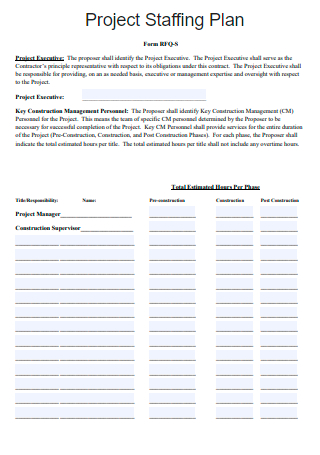
Project Staffing Plan Template
download now -
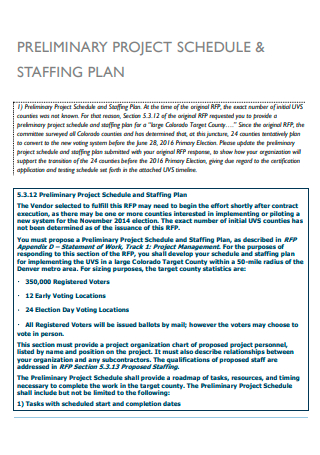
Preliminary Project Schedule and Staffing Plan
download now -
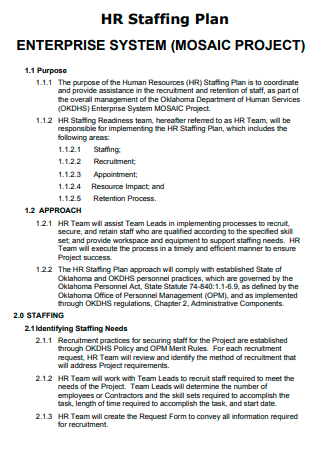
Project HR Staffing Plan
download now -
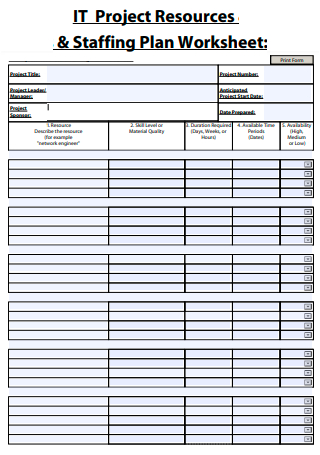
IT Project Resources and Staffing Plan Worksheet
download now -

Project Personnel Staffing Plan
download now -
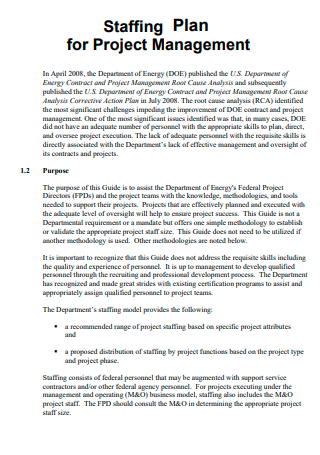
Project Management Staffing Plan
download now -
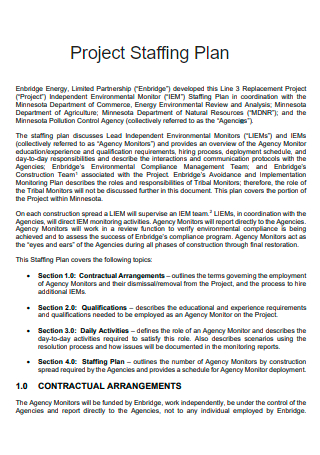
Standard Project Staffing Plan
download now -
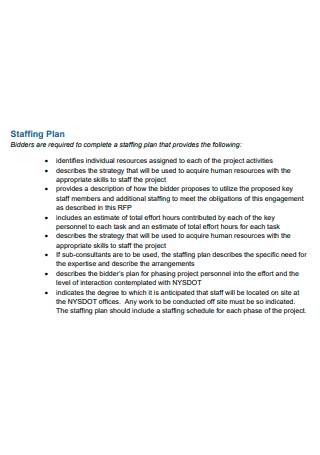
Project Staffing Plan in PDF
download now
What Is a Project Staffing Plan?
To define a project staffing plan, you must be aware of what a staffing plan is in the first place. A staffing plan is a strategic planning process in which a company’s personnel needs are assessed and identified, usually by the HR team. A good staffing plan can help you figure out how many and what kinds of workers you will need to achieve your company’s goals. Before you proceed to write out the plan, you can make use of the project staffing plan template readily available for you so you won’t have to start from scratch. So, go ahead and proceed to view the project staffing plan example that is provided for you in this article.
Five Staffing Options
Motivated individuals with the necessary abilities and experience complete the work and drive innovation. But due to the various hiring strategy available in society, you may be puzzled about which method is the best for your company’s unique challenges and circumstances. Give this curated list a read to learn more about the definition of each of the staffing options you could select.
How to Calculate Staffing Needs
You can learn more about the thought process that goes into your staffing needs from this list now that you have read through the staffing choice. The three major steps in a staffing strategy are determining existing staffing levels, estimating future staffing needs, and finding the gaps between the two. You can offer ideas for how to meet your staffing needs once you’ve reviewed them, which could involve recruiting and hiring new talent, internally promoting, focusing on training and employee development, or adding contractors to your team. These projections and recommendations will aid in the development of the organization’s overall human resources strategy.
How to Write a Project Staffing Plan
Your personnel strategy could include suggestions for implementing a company workshop training to address skills gaps or developing succession policies for upcoming retirements or promotions. Work with the company’s management to develop a strategic action plan to meet staffing needs that is consistent with the company’s goals, culture, and mission. When your company is experiencing considerable expansion, it’s critical to anticipate the demand for new employees. Developing a project staffing plan is vital which leads you to the project staffing plan sample provided in this article.
Step 1: Determine Your Goals
Simply put, the staffing strategy must be in line with the business strategy. Be informed of the organization’s growth monitoring strategy. If your employees are needed to staff a new office or retail site, you should be suspicious. Calculate the necessary number to multiply the size of the company’s sales team to sustain a substantial sales push. At the end of the day, it’s critical to provide additional customer service or internal assistance to enhance client satisfaction. Start with the company’s strategic plan to ensure that your talent strategy and anticipated outcomes are in alignment.
Step 2: Determine the Factors That Influence Personnel Availability
For the next section, determine what factors may have an impact on employee availability. Similar statistics for their state or local region should be examined by both large and small businesses. Local chambers of commerce, business journals, and industry associations can provide this information. Additionally, these institutions frequently synthesize data to provide an overview of market developments. This could involve new or larger companies hiring more people or laying off workers. All of these outside influences have an impact on the talent pool available.
Step 3: Determine the Functional Requirements of the Organization
Keep in mind that not all personnel need to demand hiring from outside sources. Some of your company’s talent requirements can be met internally. Outsourcing to consultants, freelancers, or independent contractors may be able to meet some of your needs. That’s why it’s a good idea to analyze the exact skills and abilities you will need and see if each organization, department, or division currently has them in-house or nearby. Inquire about how training, coaching, and other forms of growth can assist current employees in moving up or over to new or vacated jobs. These abilities and employees, on the other hand, are required indefinitely and for the long run.
Step 4: Conduct Gap Analysis
In a nutshell, a gap report examines what you have now to what you require. Ensure that the gaps in your analysis are attributable to a lack of training and development. If this is the case, include further training in your strategy for the relevant functions or positions. Examine the gaps that have arisen as a result of excessive workloads during peak seasonal demand periods, and if necessary, engage temporary personnel or outsource to contractors. A gap analysis isn’t the same as evaluating functional demands in general, but you will be able to identify not only the gaps but also potential solutions for closing them.
Step 5: Create the Plan
Your staffing plan should include a summary of all of the assessments and analyses completed as well as a description of the decision-making process. This exercise can be divided down by division for larger businesses, with the sub-plans integrated at the end. Organizational leadership, recruiting managers, and HR executives are all involved in creating a high-quality staffing plan. It’s a company-wide endeavor that’s similar to, if not identical to, budgeting. As a result, clear communication across roles and departments is critical to developing a plan that considers everyone’s interests and works for everyone.
FAQs
Do staffing agencies earn good money?
A staffing agency, often known as recruiting, staffing company, or service, is a business that connects employers and job seekers. By working with a staffing agency, you can potentially connect with several hiring managers that are looking for the ideal people for their open positions. In summary, staffing agencies are experiencing a surge in business from both employers and job seekers. Owning a staffing company may be highly profitable if you have the correct location and the right business abilities. Of course, the agency makes money and grows into a successful corporation.
Why are staffing plans important?
A staffing strategy pushes you to analyze, review, and design a strategy to assist your firm in meeting its objectives. You may therefore coordinate your recruitment efforts to attract the best candidates for your company’s requirements. Without a staffing plan, you may not be aware of who is assigned for a particular job assignment towards the project that is assigned to your company which may cause trouble in the execution process.
What is a staffing analysis?
A staffing analysis is a process of finding tendencies among your staff, such as employee turnover, job satisfaction, the levels of staffing required to manage a workload, and the skills and experience of potential employees. An analysis is used to discover trends such as the amount of staffing required to manage the workload, the organization’s structure, and employee job satisfaction. The average years of service contributed by employees to the company are also identified through trend analysis.
Writing a staffing plan in project management is tricky if you are unfamiliar with the process. But you don’t have to worry because not only are you not starting from scratch, but you can make use of the templates and samples for references. A project staffing management plan will surely keep your company organized.
